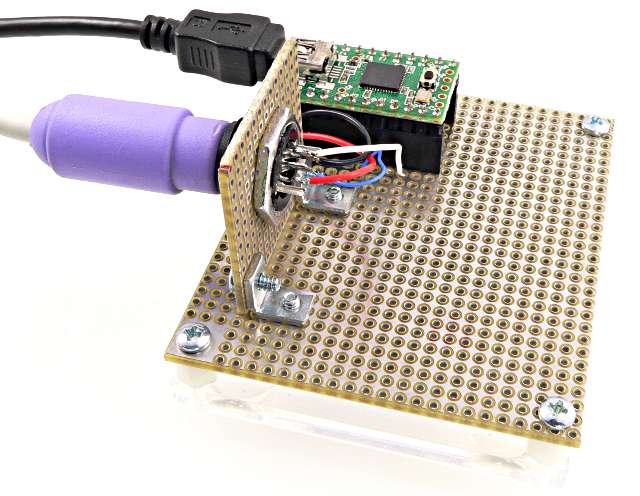
- #Arduino usb keyboard emulator serial
- #Arduino usb keyboard emulator android
- #Arduino usb keyboard emulator pro
- #Arduino usb keyboard emulator software
- #Arduino usb keyboard emulator code
#Arduino usb keyboard emulator code
Once everything is set up and working, you can even take it a step further by changing the code lines and adding more key buttons to build a customized USB HID keyboard. Next, push the key button to open the Calendar menu.
#Arduino usb keyboard emulator android
Setting up the external keyboard on Android isn’t strictly necessary, but it won’t take long - and you might as well tweak it to your needs from the start. For Android, plug the device into the smartphone/tablet through a USB-OTG adapter/cable. Once locked, the computer can be unlocked through its keyboard with/without a password as per the log-on settings. Plug the ready-to-use device into any vacant USB port of a Windows computer and push the key button. * OS (Tested): Windows 7 Ultimate (圆4) & Android 5.1.1 (Lollipop)
#Arduino usb keyboard emulator pro
* Microcontroller: Mini Leonardo Pro Micro (5V/16MHz) In the Arduino IDE, select the board as “Arduino Leonardo” (Tools - Board), copy/paste, and upload (Ctrl + U) the compiled code as usual. The code is prepared to send only one keyboard shortcut after the key button has been pushed. The sketch simulates the key press in sequence of two keys at the same time, and after a short delay, it releases them. The code (which is actually a snippet of another code prepared by me) uses the Keyboard library to lock the desktop screen of your Windows computer or open the Calendar menu on your Android phone/tablet when the key button is pushed down. To complete the hardware setup, connect the tactile switch to D2 and GND of the microcontroller board. The first is the Mini Leonardo Pro Micro (5-V/16-MHz) board, and the second is an Omron B3F-4055 Tactile Switch (I got both from web shops). In simple terms, you can program it to act just like a keyboard, mouse, or other HID-class USB device.Īs shown above, just two hardware components are required to complete the project. The 32U4 comes with a full-speed USB transceiver interface, allowing the Leonardo Pro Micro to be programmed to emulate any USB device. The former has an Atmega32U4 processor with a built-in USB-serial interface. Keep in mind that the Arduino Uno does not support USB HID and, hence, is not suitable for this project. With a simple hardware wiring and a sketch to emulate the keyboard, thanks to its USB HID, the Arduino Leonardo Pro Micro is a must. The keyboard is, in fact, a single-button keyboard that sends a pre-settled keystroke to the connected system.
#Arduino usb keyboard emulator serial
Keyboard.Described here are the construction details of a universal serial bus human interface device (USB HID) external keyboard for devices running on Windows and/or Android operating systems. setup() and loop() functions let ' s clear the window before typing anything new

make pin 2 an input and turn on the pull -up resistor so it goes high unless use this option for Windows and Linux.

Comment it out if using Windows or Linux: Arduino Leonardo, Micro, Due, LilyPad USB, or Yú n Text using another key combination (CTRL - T), then uploads the sketch to theĬurrently selected Arduino using a final key combination (CTRL - U). When you connect pin 2 to ground, it creates a new window with a keyĬombination (CTRL - N), then types in the Blink sketch, then auto -formats the This sketch demonstrates the Keyboard library.
#Arduino usb keyboard emulator software
Remember to have the Arduino Software (IDE) window selected before you press the button. Hardware RequiredĬonnect your board to the USB port, then push the button to connect D2 with GND and initiate the sketch keyboard keypress emulation. This sketch is designed to only send Keyboard commands after digital pin 2 is pulled to ground. NB: When you use the Keyboard.print() command, the Arduino takes over your computer's keyboard! To insure you don't lose control of your computer while running a sketch with this function, make sure to set up a reliable control system before you call Keyboard.print(). After running this sketch and connecting pin 2 to ground using the pushbutton, the board will have a new program, Blink. This example uses the Keyboard library to open a new Arduino Software (IDE) sketch window, send keyboard commands that type in the Blink example, and reprograms the board.


 0 kommentar(er)
0 kommentar(er)
